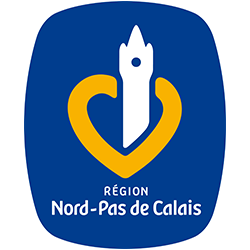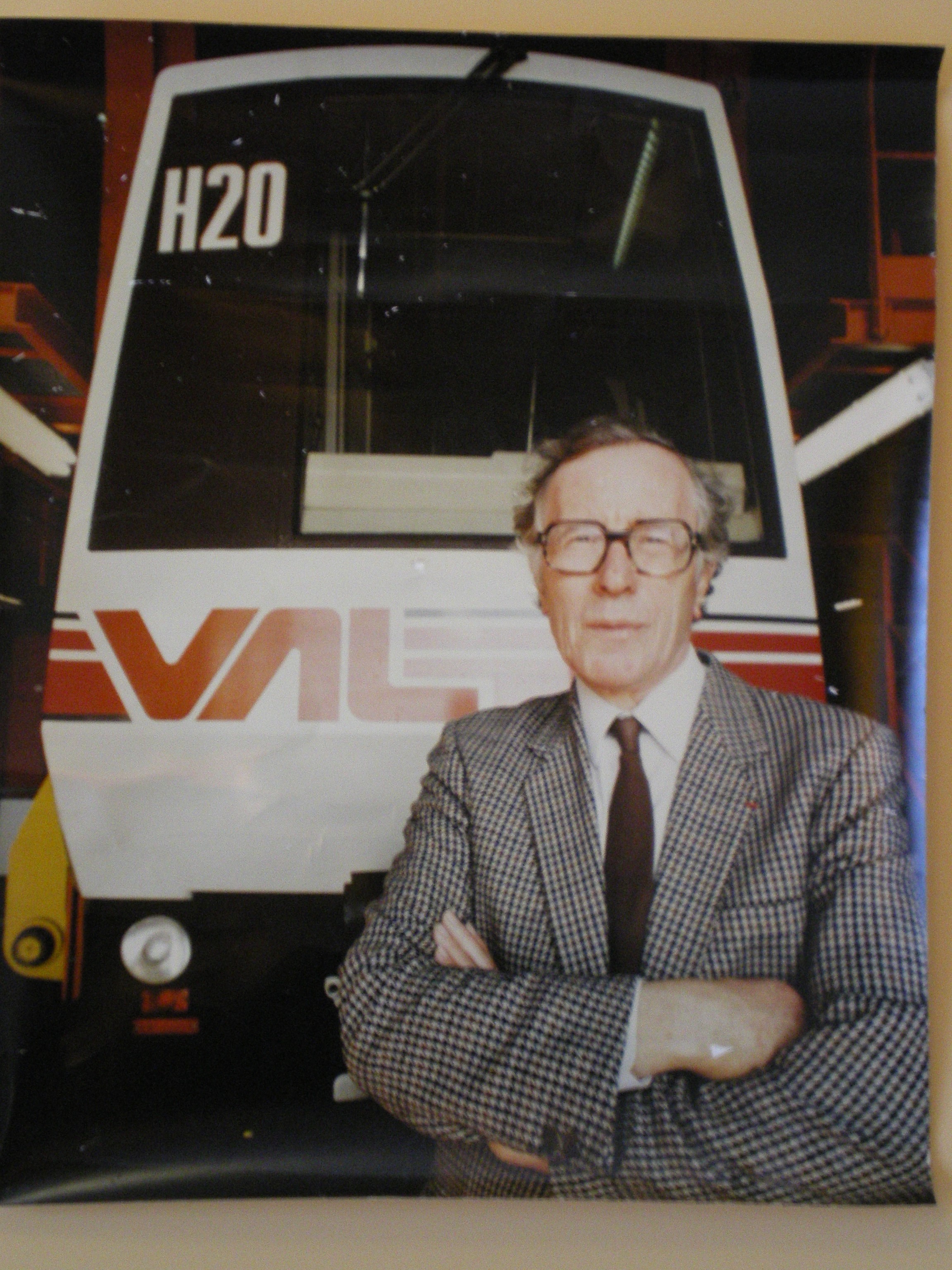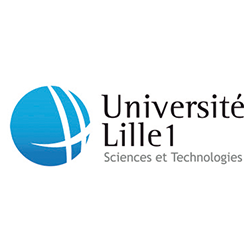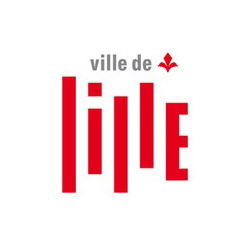

Professor Robert Gabillard & VAL Metro
The scientific career of Professor Robert Gabillard:
From the nuclear magnetic resonance to the VAL metro
By Bernard Démoulin and Georges Salmer, Professors Emeritus at the University of Lille 1 [ ]
Translated by: Odile Heddebaut - Gabillard:
This e-mail address is being protected from spambots. You need JavaScript enabled to view it
Both authors have known and appreciated Professor Robert Gabillard during their career in the Faculty of Sciences and the University of Lille 1 and this paper is, for them, a homage to this exceptional Professor.
From the Sorbonne to the CERN
Recall, first, some highlights of the scientific career of Professor Robert Gabillard, especially before arriving in Lille in 1959.
After brilliant graduate studies at the Sorbonne, he joined the Physics Laboratory of the Ecole Normale Supérieure to prepare a thesis under the direction of Professor Pierre Grivet who was the father of the French electronics research in 50-60 years. In contact with this exceptional master, Robert Gabillard developed qualities of creativity and of initiative, not to mention the rigor that characterized his career.
In this research group, he is one of the pioneers of Nuclear Magnetic Resonance "NMR", particularly on the phenomenon of "memory phase" which is his state doctoral thesis he supports in 1952. In this context, he experimentally confirms the observations of a foreign colleague and he highlights an effect which now bears his name.
His works will serve as a starting point for multiple research and medical NMR applications. An American author, Ian Pykett, in his book on medical applications of NMR, emphasizes the essential contribution of the work of Robert Gabillard for achieving this exceptional tool that provides the NMR scanner.
In 1954 he joined the CERN in Geneva, where he participated in the construction of what was, at the time, the largest accelerator in the world (30 GeV and 200m in diameter). He more particularly was concerned with controlling the position of the beam of this machine as an essential tool Nuclear Research of the last fifty years.
Professor at the Faculty of Sciences of Lille
In 1959 he was appointed professor at the Faculty of Science of Lille and director of the Radio Engineering Institute located rue Gauthier de Chatillon. He gives, then, with his colleague André Lebrun, a new and strong impetus to the development of educational and research activities at the Faculty of Science, in the field of electronics.
Upon his arrival, he completely renewed electronics teaching introducing in particular the theory of semiconductors and transistors, which was very new to the time. He helps to create, in 1960 microwave frequency teaching , and in 1961, the center of the third cycle where have been trained many incubators of researchers. These will be, not only the basis of the Lille electronic by example the IEMN , but in many universities or French engineering schools where they will have important responsibilities (Brest, Rennes, Nantes, Besançon, Clermont-Ferrand, for example).
The teaching he provided were a real treat for those who, like us, have had the privilege to follow them. We all enjoyed his great physical sense illustrating, with the minimum of equations, most of the phenomena in order to understand the orders of magnitude and reciprocal interactions. His innate sense of comparison and analogy was sometimes taken to the extreme, but they have allowed generations of students to understand the Fermi Dirac statistic; all remember the fish in a lake disturbed by the wind of thermal agitation ... Especially, his permanent opening on the major problems of modern physics required the student to go beyond the scope of official work imposed by too rigid programs. These teachings have been realised by writing books that have been very successful.
As part of his teaching, as later in his research, he was able to build bridges with the outside world and help the University to leave its isolation, important at this time. And quite naturally with the Lille engineers Schools , ISEN and IDN for instance, that relations increasingly closer were formed, causing many students to follow his teachings and become researchers in Lille electronics . As such, He was a precursor of the Federative Institute and current Doctoral Schools.
Upon arrival at the Radiotechnique Institute, He encourages the development of works on microwave spectroscopy of liquids undertaken under the leadership of his predecessor, on which work especially André Lebrun, Robert Liebaert Eugène Constant and Michel Moriamez. In addition to launching unconventional research topics, such as the coherer in metal powders, which will see practical applications more than thirty years later, he knows how to share his experience in nuclear magnetic resonance to explore new approach such as NMR Earth's field. Consequently, he temporarily attaches the Château of Phalempin to the the Faculty of Science domain, in order to subtract the harmful effects of the radio noise in the experiences, and get scientific results quite interesting.
The propagation of electromagnetic waves: from the holes in the ground to special cables
But it is in the field of electromagnetic wave propagation in complex and stratified media, such as the ground, that Robert Gabillard will give the measure of his scientific qualities and his ability to quickly discern the potential applications of his research.
He did, in this area, a pioneer work and paved the way for a generation of talented researchers...
The works on electromagnetism were stimulated by the French Petroleum Institute (IFP) faced with the location of natural gas reservoirs located at depths of around 3,000 meters. The process, developed by the research team of Professor Gabillard, was to transmit waves, from the ground, at frequencies of some ten Hertz.
The reading of the electric field, captured with position of a probe lowered into a borehole, produced a profile from which it was possible to extract the relevant data on the geometry these very heterogeneous terrain.
The completion of this research required a lot of work on the theory of wave propagation in heterogeneous environment.
Along with the theory, the experiments carried out on sites required the realization of sensitive probes to electric fields of very small amplitude. Numerous measurement campaigns demonstrated the performance and reliability of this detection method, which was also commercialised by IFP under the name "Telelog".
The study of wave propagation in soil continued then for the purposes of military communications and civil engineering in order to discover cavities in soil, but shallow. At the request of Mr. Pierre Dumont, Prefect of the North Département, Robert Gabillard was requested to propose an effective method capable of locating former underground quarries formerly operated in the eastern part of the city of Lille. The research team will respond in the development of a method for an accurate detection and ease of implementation. The method was to move, parallel to the ground surface and in the area of land invested, two antennas respectively transmitting and receiving electromagnetic waves emitting at 1 MHz.
Research on electromagnetism knew thereafter, other opportunities when the Charbonnages de France asked Robert Gabillard to study wave propagation in mine galleries. It is on the basis of this preliminary work that he had undertaken that was formed the team that developed radiating cables for this very particular context of wireless telecommunications.
This activity has boomed and a generation of researchers obtained in this area, the results at international level.
From electromagnetism to the VAL Metro adventure
It was in 1970, and incited by Jean-Claude Ralite, then director of the Planning Agency of the new town of Villeneuve d'Ascq, that Robert Gabillard gives initial thoughts on the project that will become the VAL metro.
This technological adventure, spanning over a decade, reveals once again his amazing qualities of ingenuity and communication.
The challenge was great because we had to conceive a means of urban transport, attractive, quick time, capable of extending over a large network, and without drivers!
The absence of the driver in the metro was a major innovation requiring the design of a complete automated metro with a great reliability and totally fully secure.
Robert Gabillard told us one day, that the main idea of the automatism that he had invented, resulted from the analogy with the piloting of the particle accelerator at CERN where he worked passionately in the fifties.
A first demonstrator, produced since 1971 and consisted of a railroad model set up in the room of a university laboratory, proved the feasibility of the automatism.
This technological choice had then to obtain the political approval. The task was difficult but sound scientific arguments jointly with the teaching skills of Robert Gabillard allowed it success.
Under the project management of Matra Transport, the VAL project started in 1975 by prototyping vehicles operating on a test circuit on the city of Lezennes.
Robert Gabillard then settled a team of young engineers who contributed effectively to solve the technological challenges posed by the industrial scale of this new demonstrator. Such was the case, for example, of the automatic control of dock doors when the vehicles was entering or leaving the station. VAL entered service in 1983 on the route of the line 1.
His intensive ridership, coupled with its high level of security, certainly played a major role in political decision-making that led to its current expansion, not only in the metropolis of Lille but also in Rennes, Toulouse, Orly, Roissy and abroad.
Acquired and recognized experience of Robert Gabillard in modern transport techniques, especially in safety and security, led him to take on major responsibilities.
On several occasions, he was appointed member of the security commissions of transport networks. Such was the case in 1985 with the Channel Tunnel project where he became interested specifically in the mechanical stability of the rail shuttles. Indeed, the exceptional size of these vehicles could be the cause of oscillation reaction harmful to passenger comfort as well as security.
This is probably the Regional Group Nord-Pas de Calais of Transport Research (GRRT), created in 1983, that best symbolizes the pioneering work done by Professor Gabillard. This body, where academics and industry executives from all disciplines work.
It is probably the Regional Group Nord-Pas de Calais of Transport Research (GRRT), created in 1983, that best symbolizes the pioneering work done by Professor Gabillard. This body, where are working academic and industry executives from all disciplines, perpetuates as he always strongly supported, the relationships between scientific research and innovation in today's and future transport. Its existence has contributed to the establishment, in the Nord-Pas de Calais Region, of two departments of the National Institute of Research on Transport and Safety (INRETS - today l'IFSTTAR ) and the launch of the Competitiveness Cluster "ITrans" on automatic guided transport, hub with world ambitions.
And sailing, why not?
Science enthusiast, Robert Gabillard was even in his spare time, intensely practicing water sports. He put in place in 1978, a scientific collaboration with the French Sailing Federation. The main objective of the study involved the analysis of human-machine interactions applied to manoeuvring a sailboat. To this end, he formed a small research team to equip an Olympic storm sail type 470 with sophisticated electronics. A network of sensors associated with a database data processing expressed in terms of physical parameters, the skill of the helmsman, the underlying idea was, of course, to contribute to the improvement of his performance! This experiment posed a technological challenge because the yacht instrumentation was to be conducted without increasing its weight to stay in the Olympic gauge and with minimal electricity consumption. A little later, around 1982, Robert Gabillard realised similar work for the sport of kayaking and sailing equipment of the sailing boat France III which competed in 1983 in the challenge of the America's Cup regattas in Newport.
As a conclusion
This latest episode in the long and rewarding career accomplished by Professor Gabillard proves, once again, he was the promoter of the most unexpected scientific collaborations with his contemporaries. Whether nuclear magnetic resonance, physics particles, the propagation of radio waves, automation of vehicles, transportation security and contribution to the sports world, Robert Gabillard always showed by example that scientific reasoning could be taken for the benefit of a wide variety of modern societies concerns. He proved that there was no significant difference between the capabilities to carry out the most pure research and the most advanced application development. Instead, he showed that they could be, for the researcher, source of dynamism and constant questioning.
Finally, Professor Robert Gabillard has contributed to a decisive opening, and so fertile, of the University Lille 1 on its socioeconomic environment. He greatly contributed to its success at the regional, national and international level.








